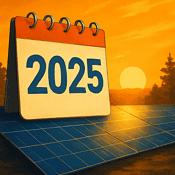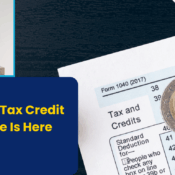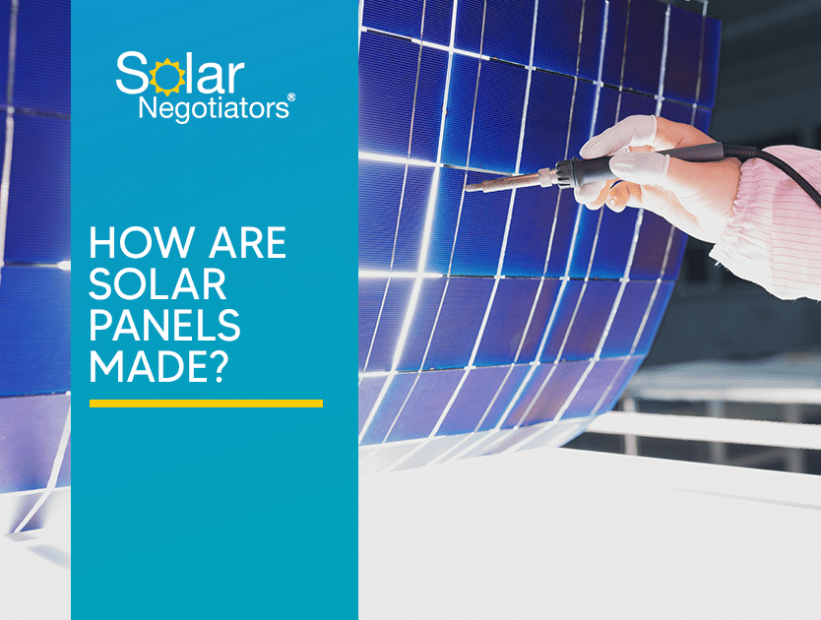
How Are Solar Panels Made?
Solar panels are helping the world generate clean energy to lower greenhouse gas emissions. According to a report by the International Energy Agency, solar power is now the cheapest energy source in history. It costs significantly less than fossil fuel and continues to become more affordable yearly. With this in mind, have you ever wondered what resources they are using to make them produce clean energy? In this article, Solar Negotiators will explain the steps of creating solar panels and why they are great for the environment.
The environmental impact of solar panels is widely discussed and commented on, but what arguments are valid? Protecting humans, wildlife, and ecosystems has become more important as we see the effects of climate change. We know solar power isn’t perfect, but it is a solution. We will examine how eco-friendly solar panels are after understanding how manufacturers make them.
What are solar panels made of?
Most solar panels today are made of polycrystalline, monocrystalline, and thin film silicon. Silicon is by far the most important material used in solar panels. They make up the semiconductors that create electricity from solar panels. While this material is the most important, it’s only one part of the solar panel. To fully create a solar panel, you need five different components to create a functioning panel:
1. Silicon solar cells
Solar cells are made of silicon and are protected by a sheet of glass over the panels, allowing sunlight to filter into the cells. Stacked together so the structure between the glass panels, silicon cells interact with the thin glass wafer sheet and create an electric charge.
2. Metal frame
The metal frame of a solar panel does a great job of protecting against inclement weather conditions or other dangerous scenarios and helps to mount the solar panels at the desired angle.
3. Glass sheet
The glass sheet plays a role in protecting the solar panel as the metal frame. Known to be about 6-7 millimeters thick and protects the silicon solar cells inside.
4. Standard 12V wire
A 12V wire helps regulate the amount of energy being transferred into your inverter, aiding with the sustainability and efficiency of the module.
5. Bus wire
Bus wires connect the silicon solar cells in parallel. Bus wires are covered in a thin solder layer for easy soldering and are thick enough to carry electrical currents.
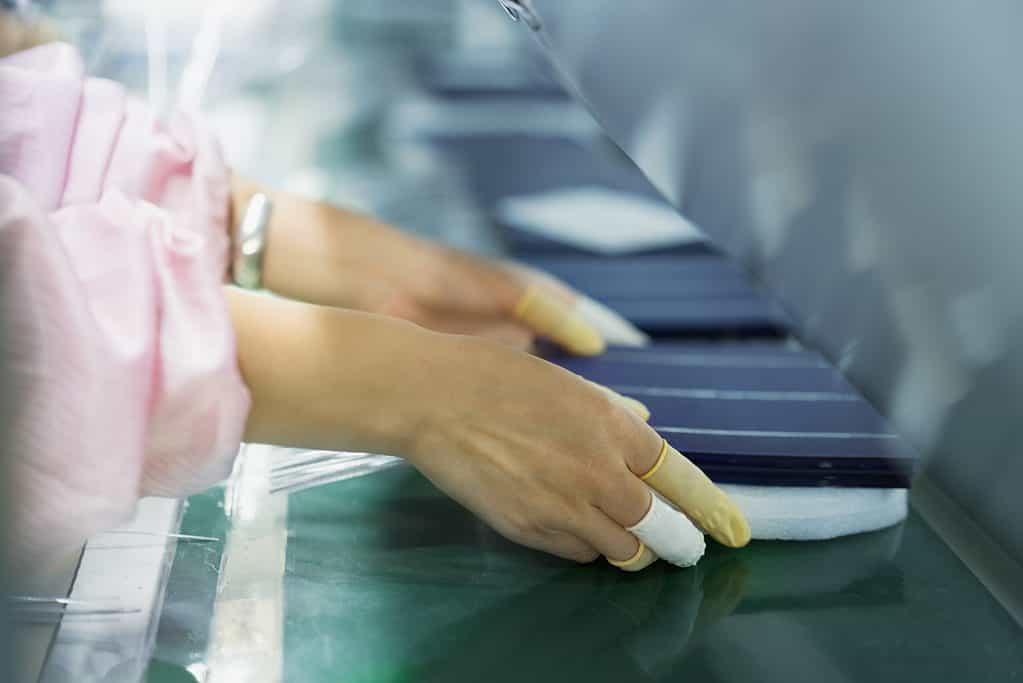
How are solar panels built?
Now we know the key components of creating a solar panel and that solar cells are the most important. Again, solar panels are made from monocrystalline or polycrystalline silicon solar cells soldered together and placed under an anti-reflective glass to keep the light from getting out. Then the photovoltaic effect starts, which creates energy. We will break down the process of building a solar panel for a better understanding.
1. Building the solar cells
As you know, solar cells are one of the primary components of a solar panel. P-type or n-type solar cells mix crystalline silicon and either gallium or boron to create silicon ingot. Silicon ingot is cut into thin sheets and made anti-reflective to capture the sunlight. Thin lines are cut into the cells to capture and move the electrical current within the cell. The cells then become semiconductors of electricity.
2. Solder solar cells together to create a panel
After the phosphorus gives the silicon wafers their electrical charge, metal connectors link each solar cell in a process called soldering. The number of cells soldered together depends on the solar panel size. When one panel is placed together, 60 or 72 solar cells usually form one panel.
3. Install a back sheet, front glass layer, and frame
A back sheet made from polymer, or a combination of polymers is needed to cover the back of solar PV modules. Next, they use a thin glass sheet is installed to protect the solar cell and filters the sunlight into the cells. Once it’s in place—next comes the metal frame, which latches onto the mounting clamps on your roof.
4. Install the junction box
Now they must install the junction box attached to the back of the solar panel protecting the wiring from damage to keep the flow of electricity moving from the panel to the inverter.
5. Quality testing
When a new panel hits the market, they are tested under the Standard Test Conditions (STC) to ensure that they meet the standard the manufacturer promises in their technical specifications sheet. The panels are then simulated for quality and strength and once they pass, the solar panels are ready to be shipped and installed.
Now that you have a better understanding of how solar panels are made, you may be wondering what type of panels you need for your project. Here, you can learn more about the best solar panels for homes in 2022. In this article, we list our top four choices of best solar panels in 2022.
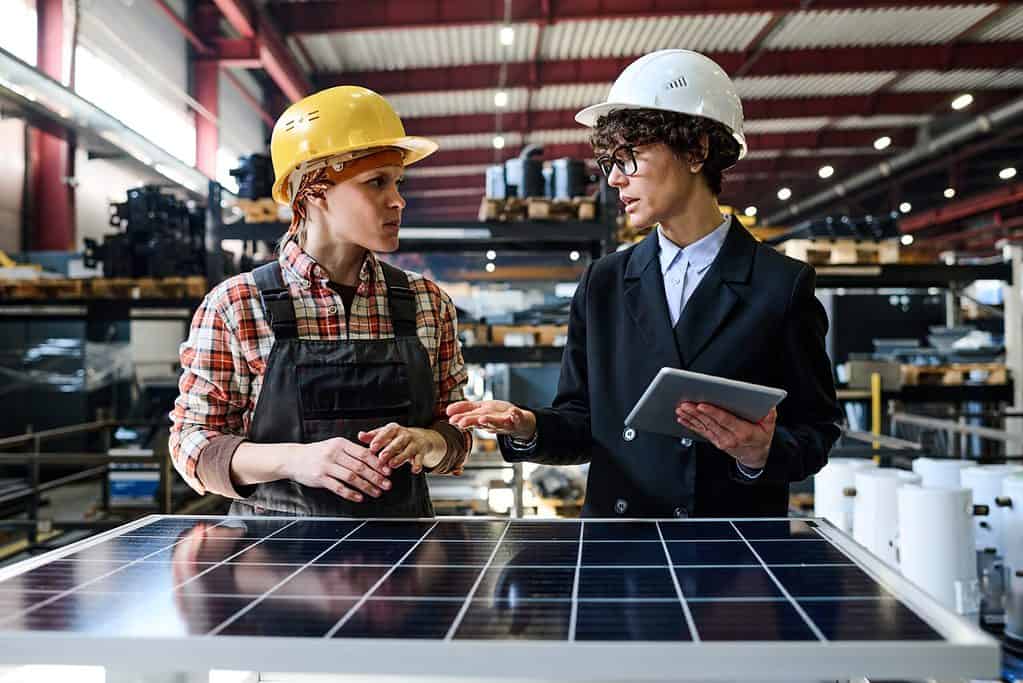
How eco-friendly are solar panels?
Today, most people want to protect the planet with clean energy and using solar energy can have a positive, lasting effect on the environment.
Harnessing the sun’s energy is one of the most eco-friendly ways to power your home or business. As you already know, it gets its power from the sun, which provides infinite energy and will continue into the future. The only downside of solar panels is that mining, manufacturing, and transportation require traditional fuels such as gas. On the other side, some argue that solar panels create more clean energy than it takes to create them. Mining and manufacturing solar panels may require energy and use chemicals doing the manufacturing process. But overall, it provides a positive net environmental impact.
Solar energy may require a good amount of energy to produce, but it doesn’t create any pollution or greenhouse gasses through its use, making it as eco-friendly as possible. Keep in mind that efficiency of solar panels and their production will continue to improve over time as better solar technology emerges.
Get a Solar Quote Today
Now you have a solid understanding of how solar panels are made. With rising energy bills, many people want to go solar. Why wait when you can save money now! Don’t hesitate to contact us at Solar Negotiators to schedule a free consultation today.

Recent Posts
Reduce your reliance on the energy grid.
Get Solar In
Your Inbox

Refer friends and get paid in-app
The more referrals you bring in, the higher your earnings.
Earn $1,000 for each referral, and bonuses of up to $1,500 once you hit your 10th referral.
